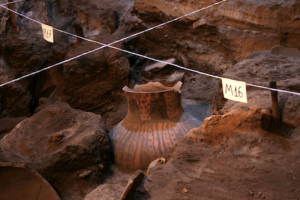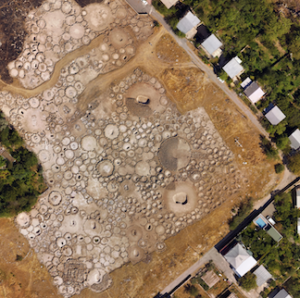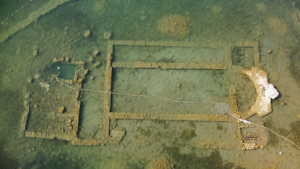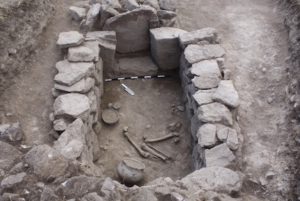
AMERICAN ASSOCIATION FOR THE ADVANCEMENT OF SCIENCE (AAAS)—Across three studies, Iosif Lazaridis, David Reich, and colleagues present a comprehensive genomic history of the so-called “Southern Arc,” a region spanning southeastern Europe and Western Asia and long considered to be the “cradle of Western civilization.” The analysis, which examined newly sequenced ancient DNA from more than 700 individuals across the region, reveals a complex population history from the earliest farming cultures to post-Medieval times. Until relatively recently, much of the ancient history of the Southern Arc – stories concerning its people and populations – have been told through archaeological data and the thousands of years of historical accounts and texts from the region. However, innovations in sequencing ancient DNA have provided a new source of historical information. Here, in three separate studies, Lazaridis et al. use ancient DNA from the remains of 777 humans to build a detailed genomic history of the Southern Arc from the Neolithic (~10,000 BCE) to the Ottoman period (~1700 CE). The findings provide an account of complex migrations and population interactions that have shaped the region for thousands of years and suggest that the earlier reliance on modern population history and ancient writings and art have provided an inaccurate picture of early Indo-European cultures.
The first study: “The genetic history of the Southern Arc: a bridge between West Asia and Europe,” presents the new dataset and focuses analysis on the Chalcolithic and Bronze Ages (roughly 5000 to 1000 BCE). This analysis revealed large genetic exchanges between the Eurasian Steppe and the Southern Arc and provides new insights into the formation of the Yamnaya steppe pastoralists and the origin of Indo-European language. The second study: “Ancient DNA from Mesopotamia suggests distinct Pre-Pottery and Pottery Neolithic migrations into Anatolia,” presents the first ancient DNA from Pre-Pottery Neolithic Mesopotamia from the epicenter of the region’s Neolithic Revolution. The findings suggest that the transition between Pre-Pottery and Pottery Neolithic phases of Neolithic Anatolia was associated with two distinct pulses of migration from the Fertile Crescent heartland. The third study: “A genetic probe into the ancient and medieval history of Southern Europe and West Asia,” focuses on ancient DNA analysis during the period of recorded history in the Southern Arc, elucidating the not-well-understood demographics and geographic origins of groups like the Myceneans, Urartians, and Romans.
“The studies by Lazaridis et al. represent an important milestone for ancient genomic research, providing a rich dataset and diverse observations that will drive the next iteration of interpretations of the human history of West Eurasia,” write Benjamin Arbuckle and Zoe Schwandt in a related Perspective. Although the authors note that Lazaridis et al. have produced an “astounding dataset, unimaginable in its scale just a decade ago,” Arbuckle and Schwandt highlight the challenges and limitations of the interpretations, suggesting that many of the narratives explored across the three studies reflect a Eurocentric worldview.
__________________________________

High aerial view of the Karashamb Necropolis, Armenia. Pavel Avetisyan and Varduhi Melikyan
__________________________________

Painted vessel-urn from Trench 1, Areni-1 cave, Armenia. Dina Zardaryan
__________________________________

Basilica of St. Neophytos (in Lake İznik, İznik/ Nikaia, Turkey; Roman/Byzantine period). Constructed in the 4th c. after the First Council of Nicaea convened by Roman Emperor Constantine, the Basilica was erected to honor St. Neophytos who was martyred in 303 AD. The Basilica was submerged underwater after an earthquake in the 8th c. AD. Nine individuals from the Basilica were, based on their DNA, of likely local Anatolian origin, and two genetic outlier individuals of probable Levantine descent. Mustafa Şahin
__________________________________

Karnut, Tomb 6 (Kura Araxes culture, Early Bronze Age, Armenia). Levon Aghikyan
__________________________________
Article Source: AAAS news release
*The genetic history of the Southern Arc: a bridge between West Asia and Europe, Science, 26-Aug-2022. 10.1126/science.abm4247
__________________________________
Advertisement





